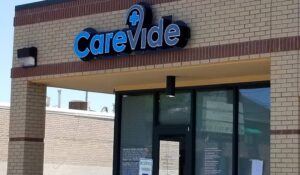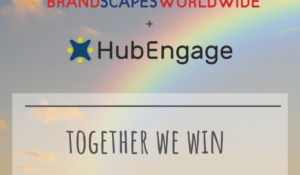HR and internal communications are tasked with keeping employees engaged, informed, and productive. With the proliferation of SaaS and enterprise software embedded into organizations today, differentiating between them – and understanding how each fits into your business’s strategic plan – can be challenging.
Every day, our team speaks with HR leaders and internal communications directors and the one most common thing between all of them is that these professionals are under increasing pressure to find an amalgamated form or method to employee engagement. We try to help them understand how an employee engagement app can help them achieve the important goals noted above. In our conversations, we are often asked about employee apps and intranets.
Both serve important roles in many organizations. But what is each one, specifically? How are they different? And how does each one help me achieve my goals?
Understanding how these channels work, which provide the most engagement, and which will satisfy the goals of your internal communications or HR objectives can help you make the best decisions for your company. We talk quite a bit about our employee engagement app, and how employee apps can increase productivity, improve retention, and ultimately, generate higher ROI for your company. But, what are intranets, and what role do they play?
What are Intranets?
Whereas your website is your main source of broadcasting content and information to the public, an intranet serves as your “internal” website. These common sites are found in organizations of all sizes, acting as a central hub for employee and employer-related content like news, messages, initiatives, policies, and more.
Intranets today are scrambling to keep up with employee app platforms. Whereas traditional intranets were solely web-based, creating havoc for users trying to consume content on their mobile devices, many intranets today are retrofitting some elements more commonly found in employee apps. It can be difficult for organizations to differentiate between intranets versus employee apps, and to make the best decision for your business.
Many Organizations Have Evolved Past Intranets
As the way we communicate as individuals has evolved in recent years, so has the way organizations interact with and engage their employees. Transparency and accessibility are key motivating factors for employees today (particularly Millennials), and the one-way approach of most intranets falls short in these areas.
Research shows that 70% of employees work remotely at least one day per week. Both the number of remote workers and the number of days worked remotely are only expected to increase in the next decade. Where intranets served a distinct purpose of broadcasting information for in-house staff, today’s workers are on the go and want platforms that not only keep them up to date but allow them to collaborate with their colleagues.
Intranets Versus Employee Apps
At HubEngage, years of research and work went into the development of our platform. Not only to launch HubEngage and our client employee apps but to continuously evolve our platform as the needs and wants of both organizations and employees change. 60% of employees using their mobile phones at work are using them for work-related projects. In other words, employees are using their phones at work to access apps like slack and google drive. When you examine employee apps versus intranets, several core differences merit attention:
Design
We designed our employee app platform from the ground up with the needs of today’s businesses and today’s workers in mind. 65% of users say a poor mobile experience negatively impacts their opinion of the organization. When you consider most intranet providers, an outdated platform has been updated to try and integrate some of the features today’s organizations demand.
Results are middling. Oftentimes, the interfaces are clunky and unintuitive, and while some features may overlap between intranets and employee apps, their usability and design aren’t intuitive, or perhaps features don’t “talk” to one another like they would on a well-designed employee app.
Usability is integral to actually improve employee engagement (and reaping the many benefits for your organization). Functionality should be intuitive and organic to your employees’ needs and how they want and need to engage with information.
Connect
At their core, intranets still serve one main purpose: To broadcast. Share information. To upload documents and files that your employees need to (or should) read. When intranets were first emerging in the HR and internal communications space in the late 1990s, arming employees with more information was a key to higher engagement. But today’s employees are much more discerning. While intranets struggle to address the dominance of employee apps and enact some of their functionality, they are still, at their core, tools for uploading content, often with a ‘mass’ audience feel, rather than tailored communication.
To that point, employee apps really take on multiple tasks for employers and employees, to keep them connected and arm them with what they need. And for many remote workers or those who are decentralized and working “on the ground,” that often includes instant messaging. While some intranets offer an ability to send messages through their platforms, hubEngage, for example, offers instant messaging directly through your custom employee app.
Rather than going through the hassle of submitting a ticket or even picking up the phone and trying to get a hold of someone, your team can simply send an IM to the right employee through your employee app, getting the information needed to move on with the day.
Enjoy
Look, we all want to have fun. Why not have fun while also doing our jobs and being productive? 80% of US employees believe game-based learning is more engaging. Many employee apps offer gamification elements that you simply cannot find on an intranet, which is traditionally more of a static entity (barring occasional, and time-consuming, updates with the latest documentation).
With the ease of use and consumption, along with multimedia like videos, images, podcasts, and more to further illuminate the content, employees are truly engaged with and immersed in your content, rather than staring at a screen. Gamification within employee apps takes the notion of content to another level, intrinsically motivating your team to not just digest information, but engage.
Share
With just about every facet of our lives online, sharing is an innate drive for many employees. While intranets are more static, even as they try to bring more opportunities to see information about your colleagues and basic collaborative functions, they are still largely scrambling to catch up to employee apps.
There is such tremendous knowledge and value inside of our teams. The right employee app can help coax it out for the benefit of your entire workforce! On our platform, as an example, you can publish curated content from users, allowing your team to share their expertise with each other. Employees feel more valued for their contributions, while others feel more connected, with a deeper appreciation for their colleagues and their expertise.
Internal social feeds further allow employees to share pictures, insights, and anecdotes from their worksites, staying connected with their colleagues and simultaneously, feeling connected to corporate. 88% of 18- to 29-year-olds indicated that they use any form of social media, 78% among those ages 30 to 49, to 64% among those ages 50 to 64. With stats like this, an internal social channel can be leveraged to share relevant company information and engage employees further.
Personalize
Intranets are still very much a static entity, with occasional updates. Although basic segmentation is possible with some intranet content, it can be frustrating for some users to try and find what’s relevant for them and their roles.
Employee apps offer much more personalization, both at the corporate and employee levels.
Corporate can push out geo-specific content to employees at certain locations and performing specific tasks. Employees can personalize their screens to see only that information that is most relevant and important to them. Yet, corporate can still push critical information to ensure the right employees are always getting access to what they need. It’s a powerful mix.
Measure
While some intranets are now offering basic segmentation and usage reports, employee apps were designed to put the right data at your fingertips, empowering you to make better business decisions. Understand what’s working and what’s not in real time, allowing you to assess and evolve as you go, and keeping your team at its most productive and engaged.
Today’s workforce demands more from their employers. Employee apps empower organizations to deliver more, while simultaneously fueling growth and improving ROI. See for yourself how HubEngage can transform your workforce. Contact us today to schedule your free consultation.















